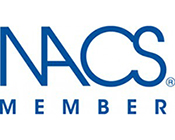CB Glossary of Terms
AM/LSB/USB – Found on Single Sideband or SSB units only. This control switches the mode from regular AM transmit/receive to upper and lower sideband.
Antenna Warning Indicator or AWI – Is an LED indicator light that is activated when transmitting without an antenna or with a poor SWR match.
Battery Check – Found on portable units only, this feature indicates the power condition of the internal battery supply. The indicator can be a simple LED “battery low” indicator lamp or can be built into an S/RF meter which shows the batter power level as a meter reading.
Channel 9/19 Priority Switching – This control allows the operator to instantly switch to either of these channels directly. It must be disengaged to return to normal channel change operation.
Clarifier – This control, found on SSB units only, allows the operator to fine tune receiver reception if the sound seems off-frequency or distorted.
Delta Tune – This control does much the same for AM band reception as the clarifier does for SSB. It is a 3-position control rather than a variable control like the clarifier, allowing the operator to get the high (+) or low (-) side of the frequency transmissions.
Display Bright/Dim Switch – This control allows the operator to brighten or dim the CB’s LEDs and meter lamp display to preference.
HI/LOW Tome – This control changes the tonal quality of the speaker audio added bass or treble tone as desired by the listener.
Local/Distance Switch – This control is basically a two position RF Gain control. See RF Gain.
Mic Gain – This control adjusts the sensitivity of the microphone amplifier circuit. Under extremely noisy conditions, reducing the mic gain should improve voice clarity by reducing the sensitivity of the mic circuit to background noise.
Noise Blanker (NB) and Automatic Noise Limiter (ANL) – These special circuits help reduce engine ignition, electrical and other atmospheric noises picked up by the CB through the electrical or antenna cabling. Some CB’s have these features built into the unit operating automatically which others provide manual on/off switches.
Micro-Tune – Unique remote channel selection system. Up/down buttons on top of the microphone allow the user to change channels without searching for dash-mounted control: Provides improved safety and convenience.
Power Hi/Low – Found on portable units only, this control allows transmitting at a lower output power to minimize battery drain. Transmitting signals depletes battery power more rapidly than receiving. Transmitting at 4 watts output power will also drain battery power more quickly than transmitting at 2 watts. Low power is typically 1 to 2 watts power output while high power is between 3 and 4 watts.
Public Address (PA) – This control switches the radio from CB mode to function as a public address amplifier and microphone. To complete the PA system, an optional PA speaker simply plugs into the PA jack on the back of the unit.
FR Gain – This variable control adjusts the reception sensitivity of the receiver. It can also reduce unwanted interference in the congested urban areas or increase the receiver sensitivity to help pick up a distant signal when the air waves are quieter.
Squelch – This control, standard on all CB’s, quiets the receiver of unwanted background static noise and weak signals while allowing stronger signals to be heard. Normally this control is adjusted to the point where the receiver is quiet and only signals of the desired strength are allowed.
SWR/CAL/S-RF Meter and Switch – The SWR/CAL meter feature, in conjunction with the Calibration (CAL) control knob, allows the operator to take an SWR reading of the unit and its antenna system using the CB’s built-in meter. The S/RF features provides a measurement of inbound signal strength in the receive mode and power output in the transmit mode. Many units have the S/RF feature only, with the SWR/CAL feature.




